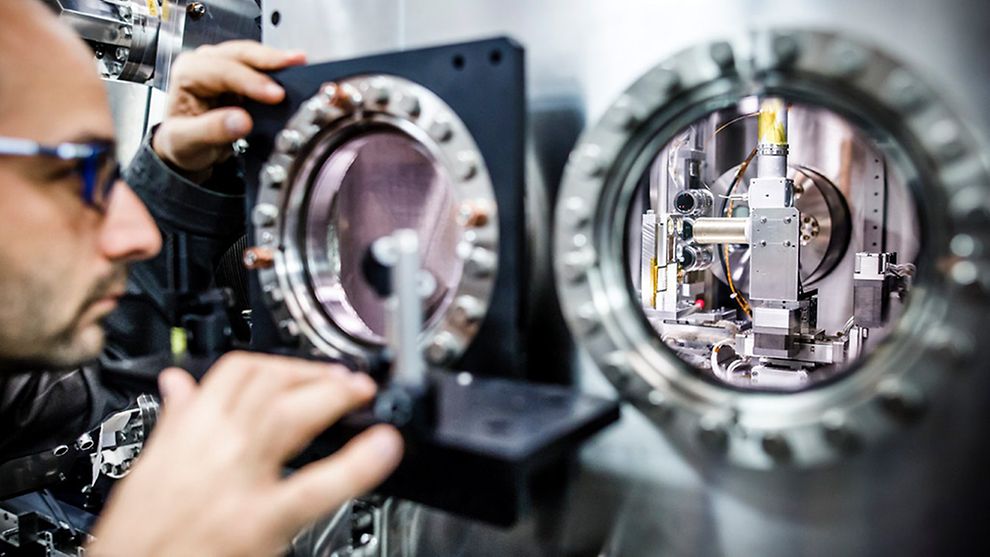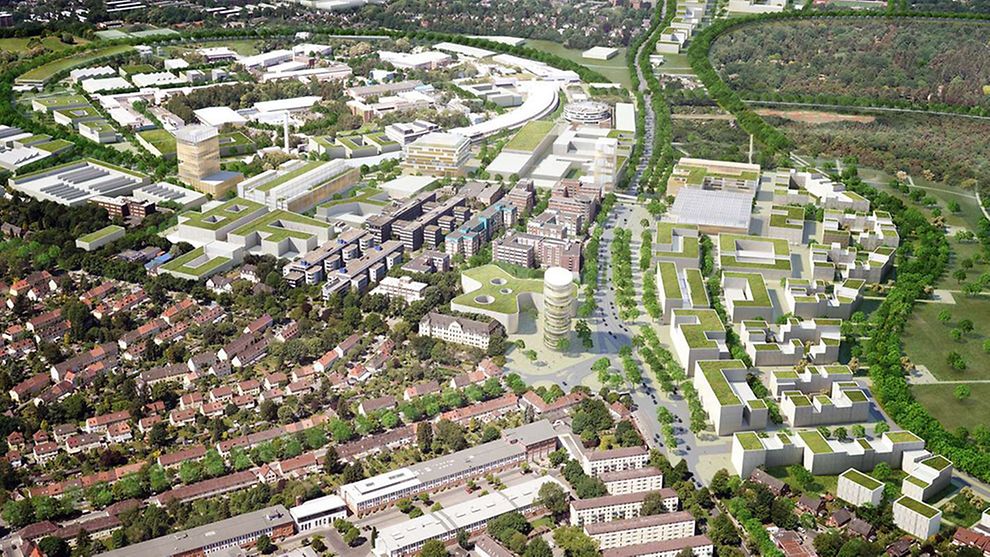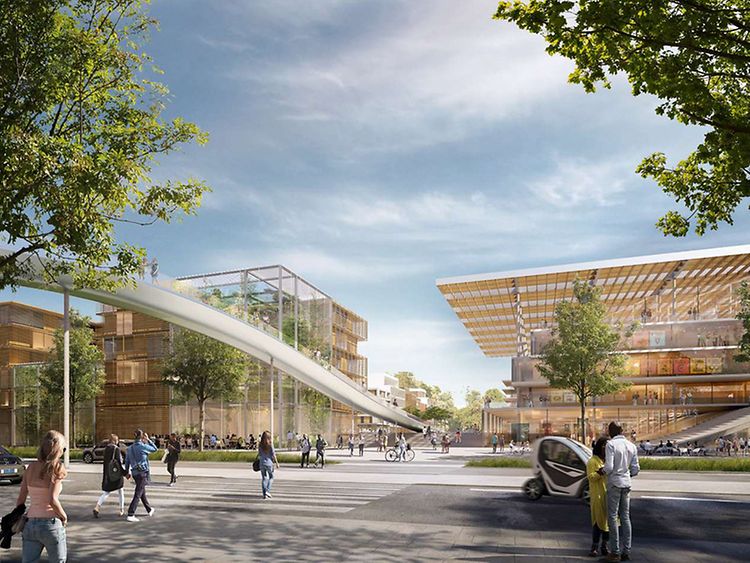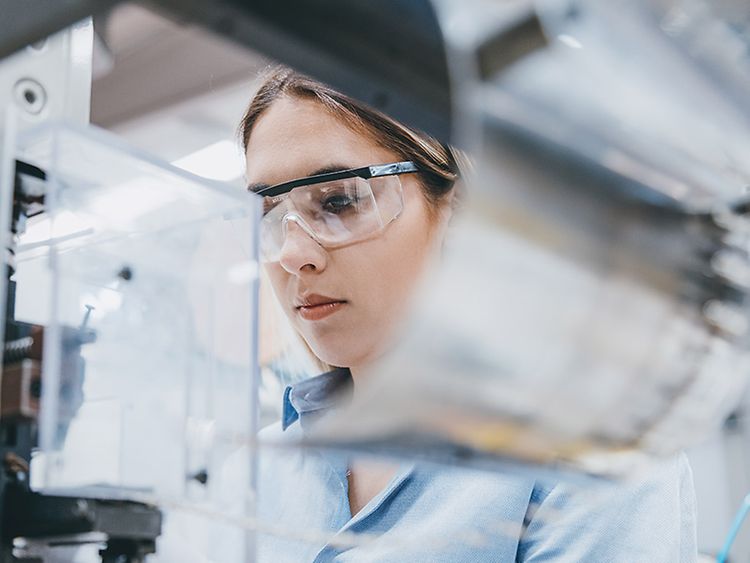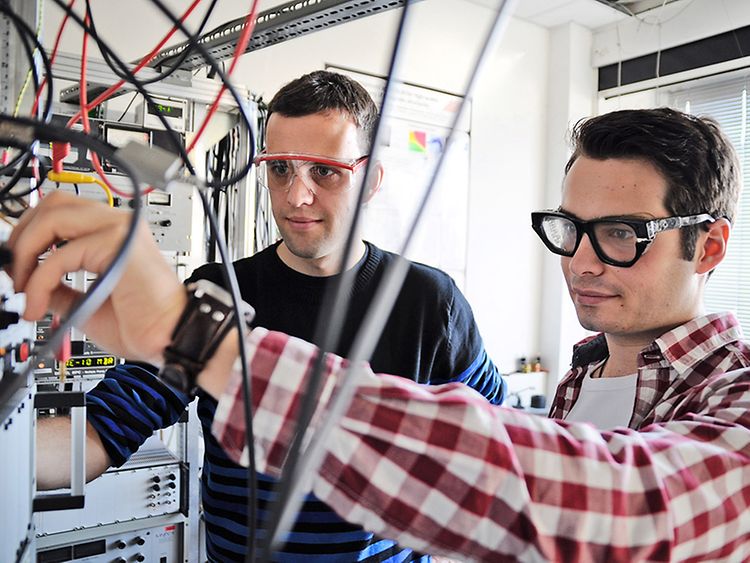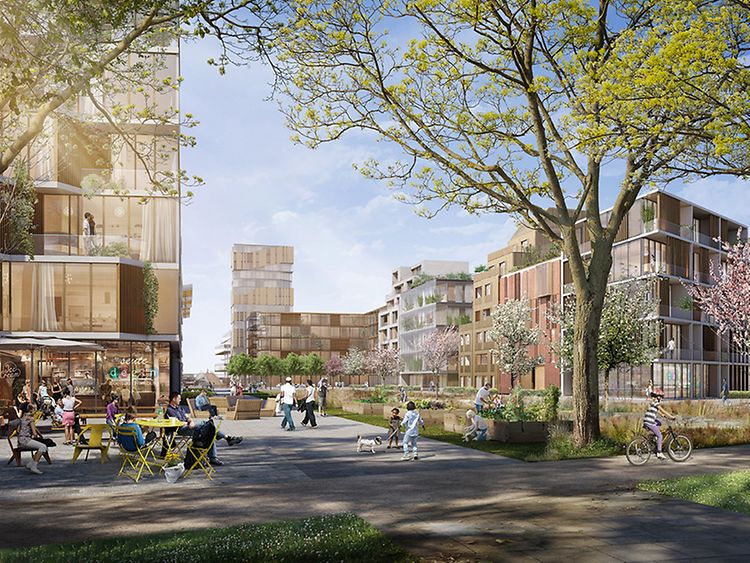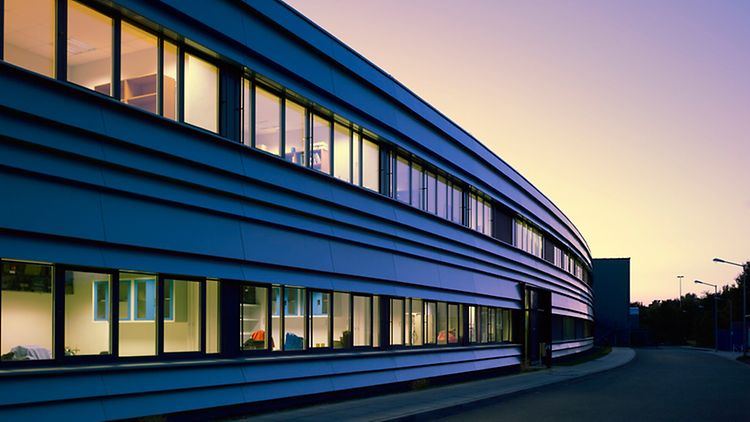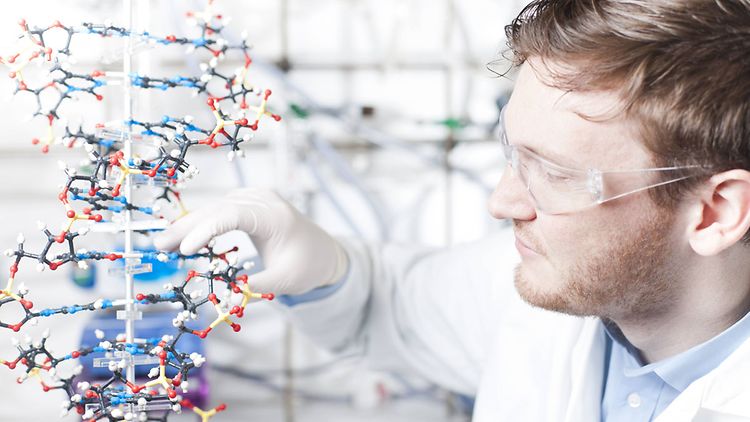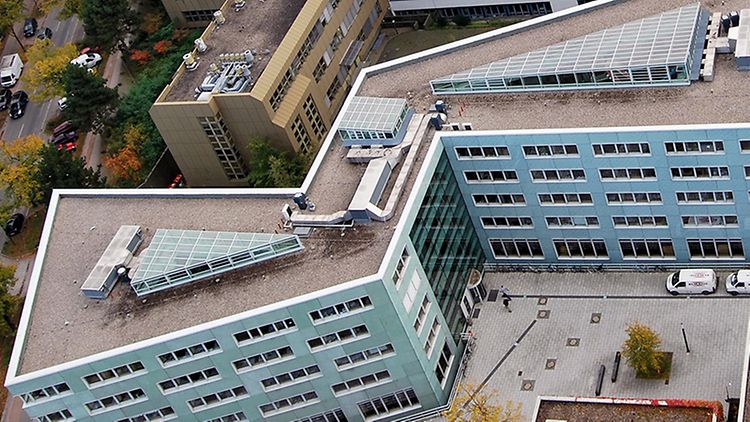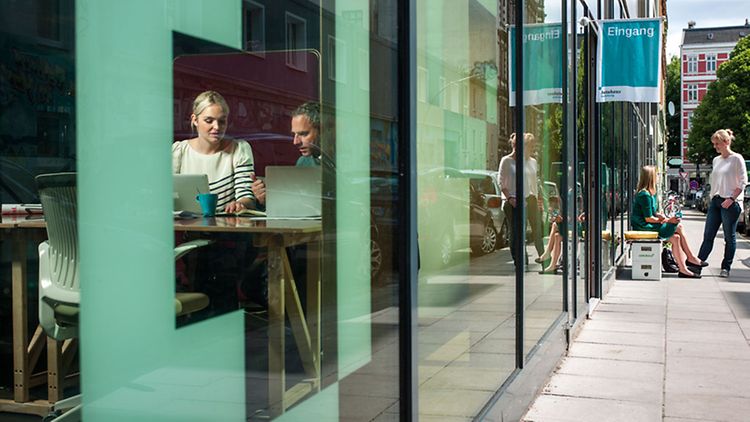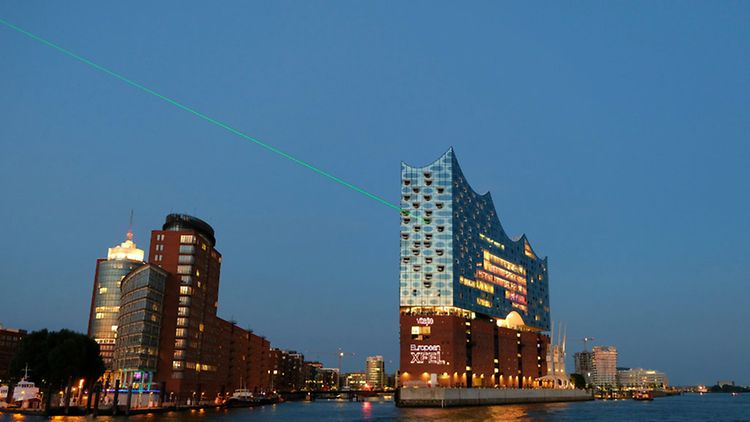What’s being researched in Bahrenfeld?
Hamburg’s Bahrenfeld district is one of the most important locations in Germany for international research, with work on topics ranging from the smallest building blocks of matter known to man to exploration into innovative materials and new medicines.
Top researchers in the fields of photon- and nanoscience explore the workings of complex matter, investigating, for example, how electrons, atoms and molecules interact in space and time. The University of Hamburg and the DESY research centre are leading the way in the discovery of light-induced superconductivity, laser-directed chemistry, time-resolved protein nanocrystallography, and novel chemical nanoparticle synthesis techniques. These projects create foundations and applications for materials science, medicine and nanotechnology.
At the same time, infection researchers and structural biology scientists analyse cellular processes with the aim of better understanding pathogens and finding new treatment options against infectious bacteria, parasites and viruses, while the Center for Data and Computer Science (CDCS) is creating a hub for scientific computing on campus that will develop new methods for increasingly data-intensive particle accelerator research.
Of course, thanks to DESY, Bahrenfeld’s most famous area of research is particle accelerator and X-ray laser technologies.
Particle accelerators and research networks
The opening of the world's largest X-ray laser, the European XFEL, in September 2017 was a global milestone. But Hamburg’s reputation as a global centre for X-ray light research dates back much further.
Since its founding in 1959, DESY has worked in close cooperation with the University of Hamburg on the development, construction and operation of giant particle accelerators to explore the structure and function of matter. With the free-electron lasers FLASH and European XFEL, as well as the synchrotron radiation source PETRA III, the three best-in-class facilities of their kind are located in Hamburg. They produce ultra-short x-ray flashes that capture both still and moving images from the nano-world, helping to unlock the secrets of nature.
Unique in terms of its large-scale facilities, every year DESY's research light sources attract thousands of scientists from all over the world. Renowned research institutions such as the European Molecular Biology Laboratory, the Helmholtz-Zentrum Geesthacht and the Max Planck Society permanently operate outlets on campus in order to have regular access to the unique light sources. The research facilities are thus an anchor and crystallization point for interdisciplinary exchange and the development of new concepts in research. For example, the large-scale facilities are supplemented by special reprocessing methods and complementary methods, such as cryo-electron microscopy for structural resolution in the Center for Structural Systems Biology (CSSB), an electromagnetically shielded, low-vibration clean room (dust-free room) at the University of Hamburg to make a unique centre for the study of matter.
Future project: Petra IV ‘Next Generation’
With PETRA IV ‘Next Generation’, DESY is developing the world's best 3D X-ray microscope. PETRA IV ‘Next Generation’ will deliver images of processes in the nanocosm a hundred times more detailed than is possible today, enabling huge strides in research areas that pose major challenges for modern society, such as energy, multifunctional materials, information technology, medicine and mobility.
Utilizing innovative accelerator technologies, PETRA IV ‘Next Generation’ enables the generation of X-rays with unprecedented luminosity, which can be focused to a diameter of a few billionths of a metre (nanometres), providing ultra-sharp insights into chemicals and raw materials. Such precise insights into the molecular workings of new materials will enable researchers to analyze complex processes inside a catalytic converter, a battery, or a microchip under realistic operating conditions, thus enabling the tailor-making of innovative materials for a plethora of uses.
Together with the European X-ray laser XFEL, the high-resolution PETRA IV ‘Next Generation’ 3D X-ray microscope will help make Science City Bahrenfeld home to an internationally leading research infrastructure that will attract the best minds from around the world, strengthening competition.
Exchange and innovation
Science cities can best develop their potential when it is possible to make scientific expertise usable and accessible for society. The fruitful combination of science and industry is a prerequisite for these new innovation locations. This requires spaces in the immediate vicinity of knowledge institutions where startups and research-oriented companies can develop and test new technologies.
In this respect, Science City Bahrenfeld will establish Hamburg as a hub in Northern Germany. The overall concept of Science City Bahrenfeld is that of a contemporary research environment supporting a strong network of exchange (especially between research and business), making innovation more efficient. Science City Bahrenfeld will have the means to attract world-class technology-driven enterprises, further aiding the relationship between industry and science.
By the end of 2020, startups and young companies will find everything they need for healthy growth in Science City Bahrenfeld, including state-of-the-art work environments, workshops and laboratory spaces. All of this will be available at the innovation centre being built in Science City Bahrenfeld with the support of DESY, the University of Hamburg, and the Free and Hanseatic City of Hamburg. Similarly, another flagship project of Science City Bahrenfeld is a planned technology and startup centre that will offer support to fledgling companies working in the fields of life science, biotechnology, nanotechnology and new materials. It will receive EUR 95 million from federal funds.
Still more efforts meant to further innovation and exchange on the Science City Bahrenfeld campus will be supported by the ‘beyourpilot - Startup Port Hamburg’ platform, which will aid local universities and research institutions as they cooperate on advising and providing services to knowledge-based startups and spin-offs. Likewise, PIER ― a strategic partnership between DESY and the University of Hamburg ― is offering additional support, encouraging business startups to make visible contributions to knowledge and technology exchange in the metropolitan region.
In addition, DESY operates the MicroTCA TechLab on campus ― a Helmholtz Innovation Lab where close cooperation between science and industry in the electronics sector is already practiced ― and the DESY Innovation Village ― an office and laboratory building where DESY is involved in innovation and startup projects.
Exchange of knowledge is an important building block for the development of creative environments. The mutual exchange of knowledge between the scientific community and society at large strengthens future-oriented social development. This is the philosophy behind the planned DESYUM Visitor Center, which will provide visitors of all ages with deeper insights into science. Additionally, avenues such as DESY guided tours, evening events such as ‘Worth Knowing’ and the Hamburg ‘Night of Knowledge’ are making science and research institutions more accessible to the general public, and helping to create a cultural climate of exchange necessary for science to flourish within industry.

